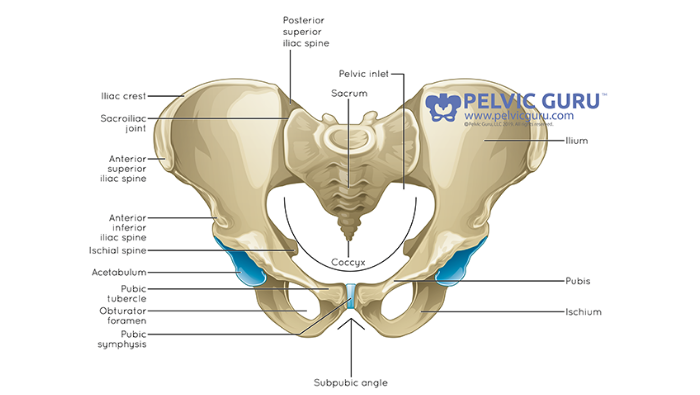It’s Not Just About The Pelvic Floor
As you may know, we Women’s health physiotherapists often talk about the pelvic floor muscles quite a lot. However, we also assess and treat many other muscles surrounding the trunk, pelvis, hips, and thighs, that influence pelvic health and various pelvic floor muscle dysfunctions.
I am going to take you through some of the muscles I commonly find issues with, and treat in conjunction to the pelvic floor muscles.
First, here’s a quick look at the bones of the pelvis:
· Ilium: the largest pelvic bones – when you put your hands on your hips you are touching the ilium.
· Ischium: the part of the pelvis that you sit on.
· Pubis: the front part of the pelvis that joins both sides together via the pubic symphysis.
· Sacrum: the base of your spine.
· Coccyx: also known as the tailbone, and attaches to the lower part of the sacrum.
Hip Flexors (Iliopsoas): The psoas and iliacus muscles join together at the attachment on the femur.
· Psoas (highlighted in the above photo)
Attachments: the lumbar vertebrae from T12-L5 to the femur.
Actions: hip flexion, balances trunk in sitting position, trunk flexion, trunk side-bend.
· Iliacus
Attachments: the inside of the pelvis at the ilium and iliac fossa to the femur.
Actions: hip flexion, stabilizes hip joint.
If the iliopsoas muscles are tight or if there are myofascial trigger points in the iliopsoas muscles, this can lead to an anterior pull on the pelvis, abdominal/anterior hip/groin pain, and low back pain. The hip flexors are put into a shortened position when in a sitting position, and are used when walking, running, hiking, and going upstairs.
Inner thighs:
· Adductors (Brevis, Longus, and Magnus)
Attachments: the pubis to the femur.
Actions: hip adduction (brings thigh inward towards other thigh), partially used for hip flexion and extension.
Myofascial trigger points in the adductor muscles refer pain to the upper inner thigh area, and is a leading cause of groin pain. Adductor muscles are commonly contracted when people have urinary urgency and urinary incontinence to try to (ineffectively) prevent leakage and ‘hold in the pee.’ The adductor muscles also tend to contract when pelvic floor muscle weakness is present, as a way to compensate for the weakness.
Hip External Rotators:
· Piriformis
Attachments: the sacrum and sacrotuberous ligament to the femur. This muscle is located deep in the buttocks (under the gluteals).
Actions: Externally/laterally rotates the thigh, abducts flexed thigh.
Tightness in the piriformis muscle can be linked to sciatica (nerve pain down the back of the thigh), due to the muscle’s proximity to the sciatic nerve. Myofascial trigger points in the piriformis muscle can lead to referred pain at the mid to upper buttock area and the pelvis.
· Obturator Internus
Attachments: The pubis and ischium to the femur.
Actions: Externally/laterally rotates the thigh, abducts flexed thigh.
Tightness and/or myofascial trigger points at the obturator internus muscle can lead to referred pain into the coccyx/tailbone and deep pelvis.
Hamstrings (biceps femoris, semimembranosus, and semitendinosus):
· Biceps Femoris
Attachments: ischial tuberosity and femur to the fibula
Actions: hip extension, and knee flexion and external/lateral rotation
· Semimembranosus
Attachments: ischial tuberosity to the tibia
Actions: knee flexion, and hip extension
· Semitendinosus
Attachments: ischial tuberosity to the tibia
Actions: knee flexion, and hip extension
These three muscles together form what is known as the hamstrings. Hamstring tightness can lead to posterior pelvic tilting, and myofascial trigger points can lead to referred pain up into the buttocks, and down the leg behind the knee.
So what does this all mean??
Pelvic floor dysfunction may be from muscles surrounding the pelvis, and not the pelvic floor muscles themselves. This is why pelvic floor rehab should include working on the muscles surrounding the pelvic floor, not just the pelvic floor.
Check out our Pelvic Floor Revival Plan coming in February 2023 which will rehab all the muscles around the pelvis along with the pelvic floor.



